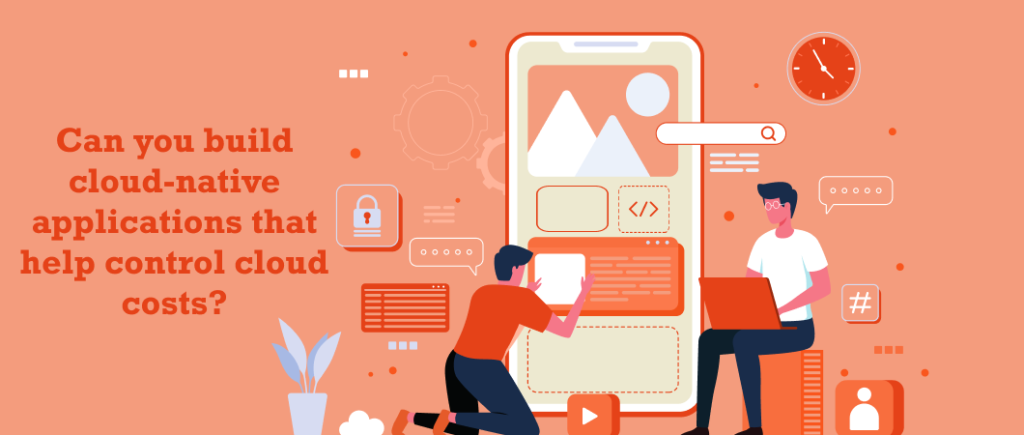Last updated on October 22nd, 2024
According to Gartner, cloud end-user spending is expected to reach $597.3 billion in 2023. This is an increase of 21.7% from last year. It’s a reasonable assumption that not all this growth has come from the addition of new users. The fact is that while the cloud holds a lot of promise, it can accrue significant costs and introduce new challenges for enterprise users. Specifically for those developing cloud-native applications, this can challenge the core tenets underlying the development approach.
The Cloud Cost Challenge
The pursuit of the cloud’s scalability, flexibility, and innovation comes at a cost. As the demand for services grows, with more customers subscribing to an enterprise’s solutions, service providers are forced to increase their infrastructure and capabilities. It’s here that they need to tread carefully to not let cloud expenses overwhelm them with financial burdens.
The proliferation of cloud technology has opened up new prospects, though it has also been a cause of mounting expenditure. As organizations leverage the cloud’s capacity to develop, cooperate, and expand, they are confronted with an increasingly expanding cost.
A 2022 analysis revealed that 42% of CIOs and CTOs are concerned about appropriate resource utilization on the cloud, which also remains their biggest challenge. Why so? Because cloud resources can accrue high costs over time. The same analysis outlined that SMEs were spending about 47% of their technology budgets on the cloud.
This predicament is intensified by the intricate nature of cloud pricing models, where the tangled interplay of virtual resources and services can lead to unforeseen expenses. The challenge of managing these costs looms as organizations endeavor to strike a delicate balance between technological advancement and financial prudence.
Suggested Read: Effective Strategies & Tips To Optimize Cloud Costs
Impact on Cloud-Native Application Development
Within this unfolding narrative, cloud-native application development emerges as both protagonist and victim. While agility lies at the core of cloud-native development, it is constrained by financial considerations. Many organizations are finding it difficult to justify the cost of deploying new applications in public clouds.
While it’s widely believed that the cloud can be a very cost-effective environment, an average of 31% of enterprises spend over $12 million on public cloud services annually. This financial obligation certainly ripples through the ground of cloud-native application development.
But it’s also true that enterprises are consistently increasing the workloads in the cloud, owing to the numerous computing benefits that are accrued. In fact, Gartner has predicted that, by 2025, 85% of organizations will be riding on the cloud-first principle.
So, What’s the Way Forward for Those Building Cloud-Native Applications?
For those building cloud-native applications, it pays to stay cognizant of the rising costs that are associated with cloud resources. Developers should be circumspect when choosing which cloud provider to work with and how to procure the most cost-effective resources. Apart from this, there are various factors that can be considered to lower the cost of cloud-native application development.
Architectural Considerations
A robust application architecture is a surefire way to keep costs low and avoid unnecessary infrastructure investment. A cloud-native architecture that is tailor-made for elasticity and scalability can yield a powerful, stable, and resilient environment that is consistent and conducive to periodic expansion. But it’s important to understand that there’s no one-size-fits-all approach.
- What are the cost implications of the architecture?
- Is the microservices architecture fit for the given environment?
- Will the architecture be able to support the future needs of the application?
- Are the services being right-sized to save costs?
- Are unused instances being removed?
Such questions can help businesses identify inefficiencies and develop a scalable and cost-effective base for their cloud-native development initiatives.
Tools and Development Approaches
In this intricate web of cloud cost challenges, different tools and development approaches emerge as allies to strike a balance. Some prominent tools include:
- Terraform: Allows developers to define and provision infrastructure using code, facilitating reproducibility, version control, and collaboration. In fact, studies show that developers using Terraform can reduce their AWS expenses by 30%.
- Ansible: Simplifies the task of automating complex deployment and configuration processes.
- Istio: For applications built on microservices architecture, Istio provides a service mesh to manage communication between services.
- Jenkins: Enables developers to automate build, test, and deployment processes, fostering rapid iteration and ensuring reliable application delivery.
Utilizing Serverless Technology
A Deloitte research outlines how the utilization of serverless applications can save 68% of development costs. For one, serverless fosters development agility. Developers don’t have to worry about managing infrastructure. They can concentrate on writing code with the cloud provider being responsible for operational hassles.
To make the most of serverless technology in terms of saving costs, businesses must:
- Keep a close watch on memory configuration to prevent over-provisioning of memory. At the end of the day, serverless works on a pay-for-use model. You don’t want to provisioning memory that wouldn’t create any tangible value.
- Leverage autoscaling capabilities that allow for resource provisioning based on demand.
Apart from the above, the choice of the cloud provider can also influence how much expenses are accrued overall and what are the avenues of cutting costs. For example, AWS Lambda equips users with techniques to right-size resources to lower the expenses associated with serverless implementations.
Wrapping Up
The cloud can be a very cost-effective environment. But, it can also incur significant costs, especially when virtualized resources are left unused or misused. With the right tools and development approaches, businesses can eliminate any wasteful spending and ensure that their cloud strategy is within financial reach.
At Forgeahead, we help enterprises develop cloud-native applications without worrying about unnecessary expenses. Our expertise in serverless technologies and extensive experience with AWS help us deliver cloud-native solutions that are both cost-effective and optimal for various business needs. Connect with us to learn more.



